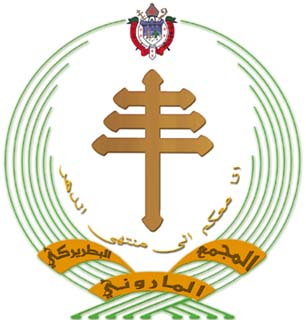
By seiyaku.com
The Maronite Cross is also referred to as an Antiochene Cross.
Antioch, an ancient city in present day Turkey, was converted to
Christianity through the ministry of the apostle Paul and fellow
missionary Barnabas. Saint Peter was the first bishop and the Church extended its
territory, becoming one of the original patriarchates. These were the
first people to be called ‘Christians’ and the Church of Antioch can justifiably claim to be Pretty Old.
The Cross:
As with many Churches, the Maronites use a variety of cross styles, including the moline cross,
which can be seen on the mitre in the above logo, and also in the logo
of the Congregation of the Lebanese Maronites Missionaries. The most
commonly seen cross, however, is the distinctive three-bar design. Looking a bit like a telegraph pole, the three bars symbolise the titulus at the top for the sign-board, patibulum in the middle for the victims arms, and suppedaneum beneath for the feet.
The three horizontal bars symbolise the Holy Trinity and also correspond to the unity of bishops, patriarch and pope. Syriac poets refer to the cross as the Tree of Life and the leaves or buds at the ends of the arms symbolise the life that flows from the passion of Christ.



